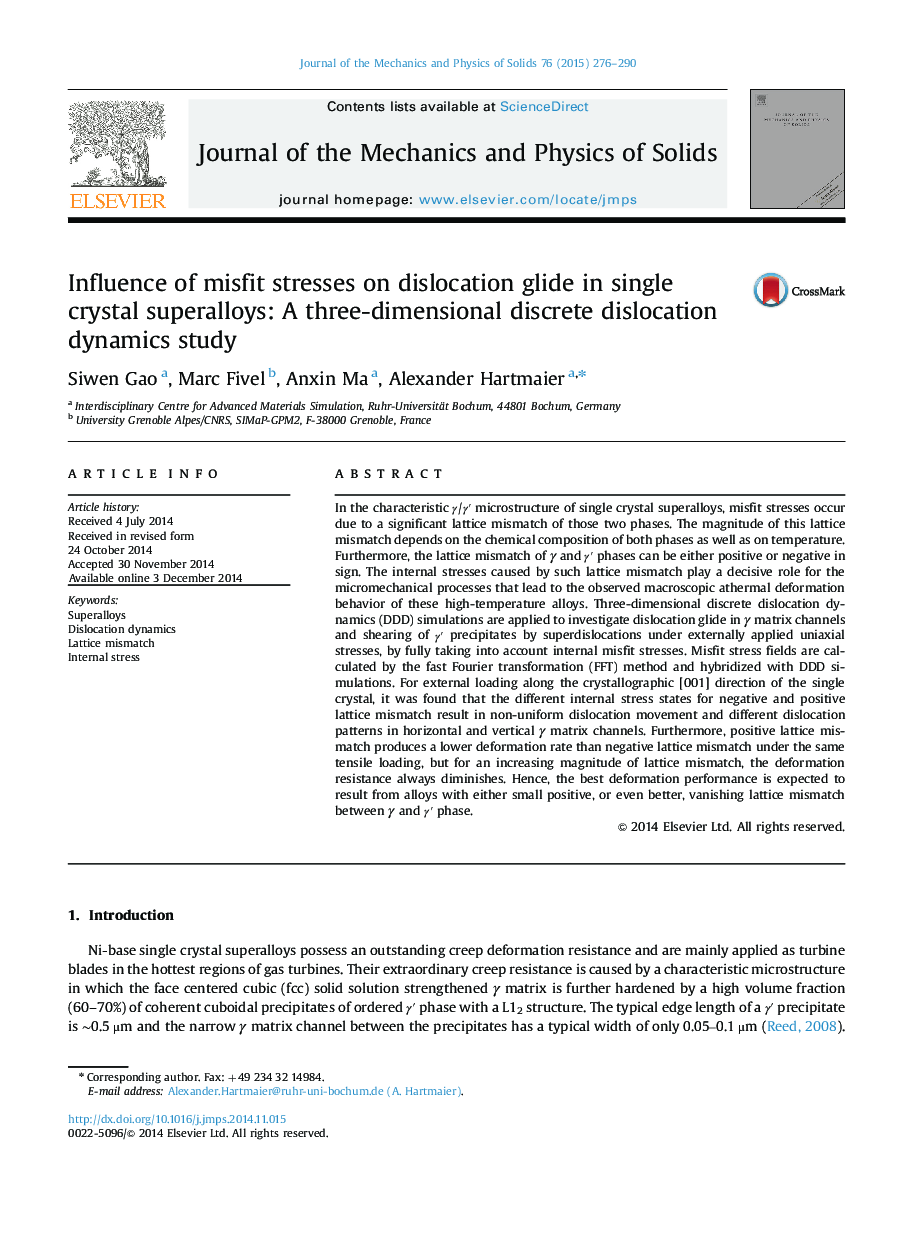| کد مقاله | کد نشریه | سال انتشار | مقاله انگلیسی | نسخه تمام متن |
|---|---|---|---|---|
| 793085 | 1467067 | 2015 | 15 صفحه PDF | دانلود رایگان |
• Influence of misfit stresses in single crystal superalloys on athermal deformation behavior studied by 3D dislocation dynamics.
• Realistic microstructures are taken into account.
• Misfit stress fields are calculated by fast Fourier transformation method and hybridized with 3D dislocation dynamics.
• Positive lattice mismatch produces a lower deformation rate than negative lattice mismatch under the same tensile loading.
• Increasing magnitudes of lattice mismatch will decrease deformation resistance.
In the characteristic γ/γ′γ/γ′ microstructure of single crystal superalloys, misfit stresses occur due to a significant lattice mismatch of those two phases. The magnitude of this lattice mismatch depends on the chemical composition of both phases as well as on temperature. Furthermore, the lattice mismatch of γ and γ′ phases can be either positive or negative in sign. The internal stresses caused by such lattice mismatch play a decisive role for the micromechanical processes that lead to the observed macroscopic athermal deformation behavior of these high-temperature alloys. Three-dimensional discrete dislocation dynamics (DDD) simulations are applied to investigate dislocation glide in γ matrix channels and shearing of γ′ precipitates by superdislocations under externally applied uniaxial stresses, by fully taking into account internal misfit stresses. Misfit stress fields are calculated by the fast Fourier transformation (FFT) method and hybridized with DDD simulations. For external loading along the crystallographic [001] direction of the single crystal, it was found that the different internal stress states for negative and positive lattice mismatch result in non-uniform dislocation movement and different dislocation patterns in horizontal and vertical γ matrix channels. Furthermore, positive lattice mismatch produces a lower deformation rate than negative lattice mismatch under the same tensile loading, but for an increasing magnitude of lattice mismatch, the deformation resistance always diminishes. Hence, the best deformation performance is expected to result from alloys with either small positive, or even better, vanishing lattice mismatch between γ and γ′ phase.
Journal: Journal of the Mechanics and Physics of Solids - Volume 76, March 2015, Pages 276–290
